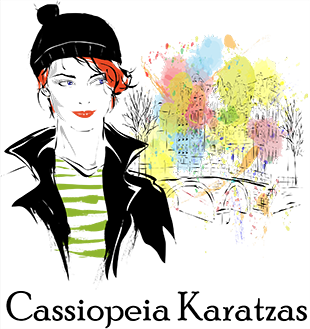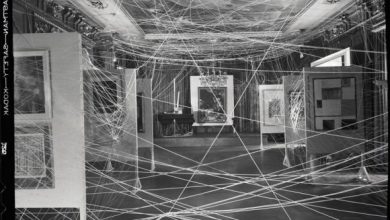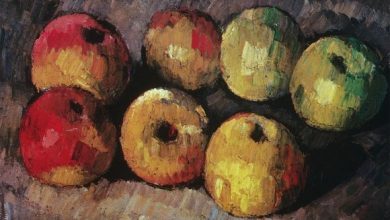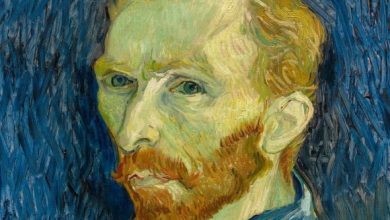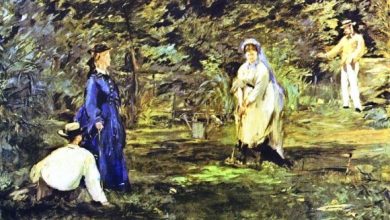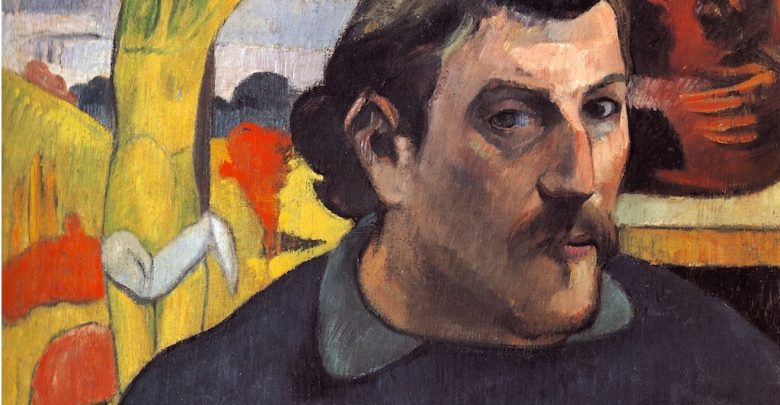
Painted on the eve of Gauguin’s first trip to Tahiti, Portrait of the Artist with the Yellow Christ is a veritable manifesto. In fact it is a triple portrait, in which the artist reveals different facets of his personality. Little known at the time, misunderstood, and abandoned by his wife who had gone back to Denmark with their children, Gauguin was having trouble obtaining an official mission to settle in the colonies.
In the central figure, Gauguin’s piercing stare expresses the burden of these problems as well as his determination to struggle on with his art. In the background, he has brushed in two other works he had painted the previous year, which confront one another from an aesthetic and symbolic point of view.
On the left is The Yellow Christ, the image of sublimated suffering, which he painted in his own likeness. But Christ’s arm stretched above the painter’s head also suggests a protective gesture. The yellow of this painting, the artist’s fetishistic colour, contrasts with the red of the Pot in the form of a Grotesque Head standing on a shelf on the right. This anthropomorphic pot, which Gauguin himself described as a “head of Gauguin the savage”, bears the traces of the great heat that petrified the material. With its grimacing mask and primitive modelling, it incarnates Gauguin’s sufferings and wildness of his personality.
Source: www.musee-orsay.fr
